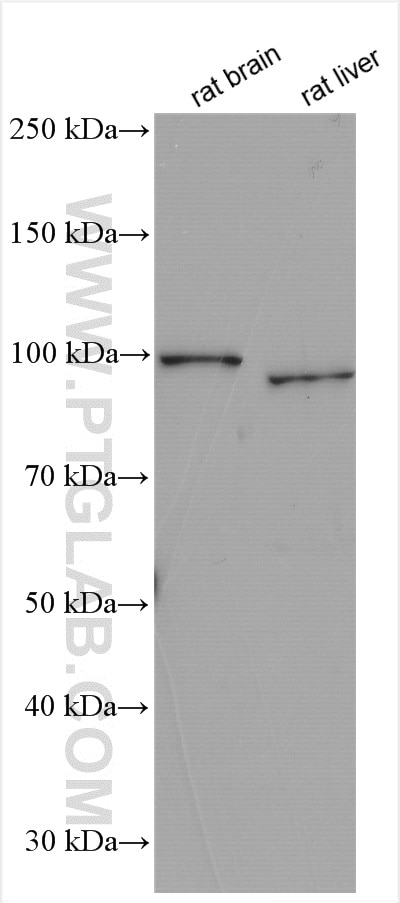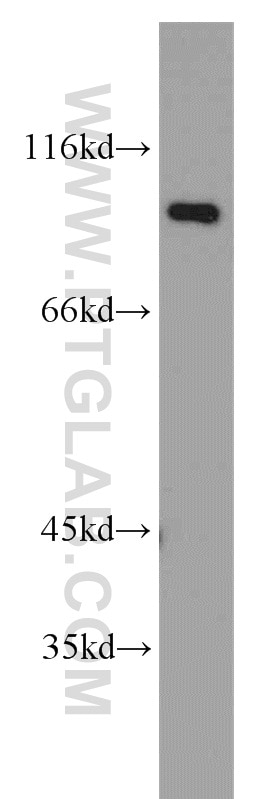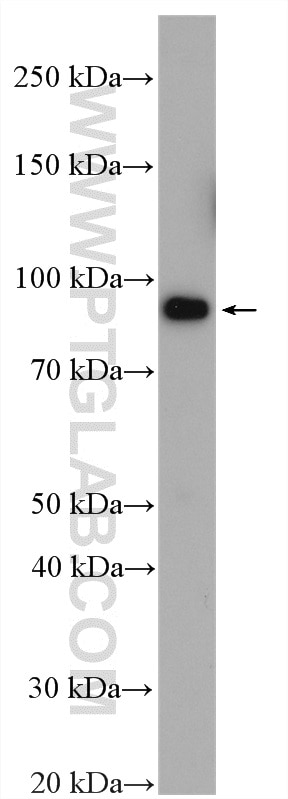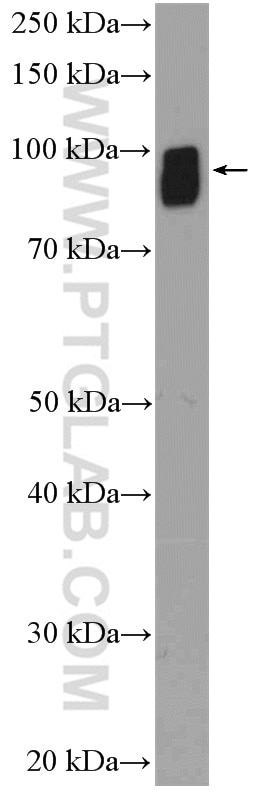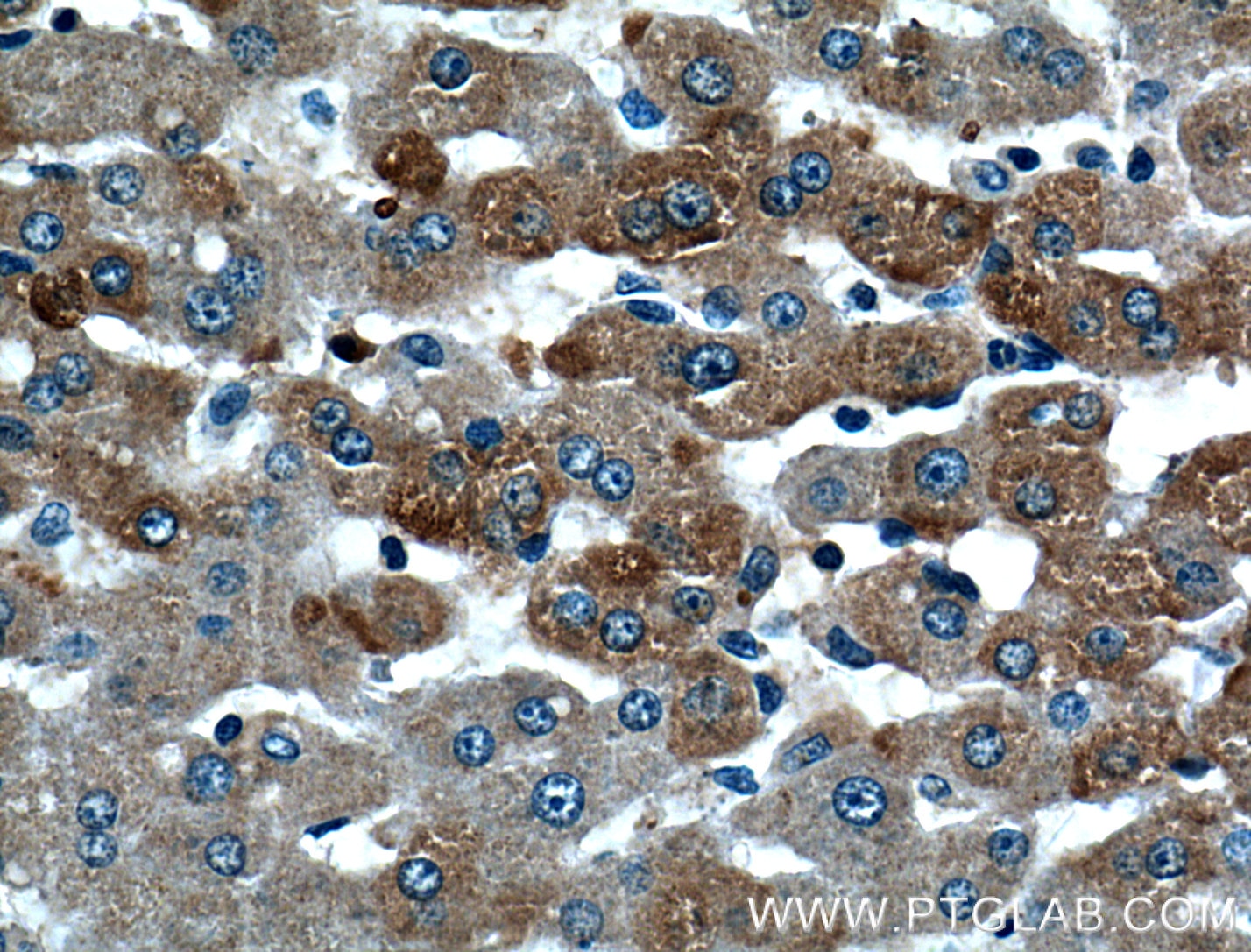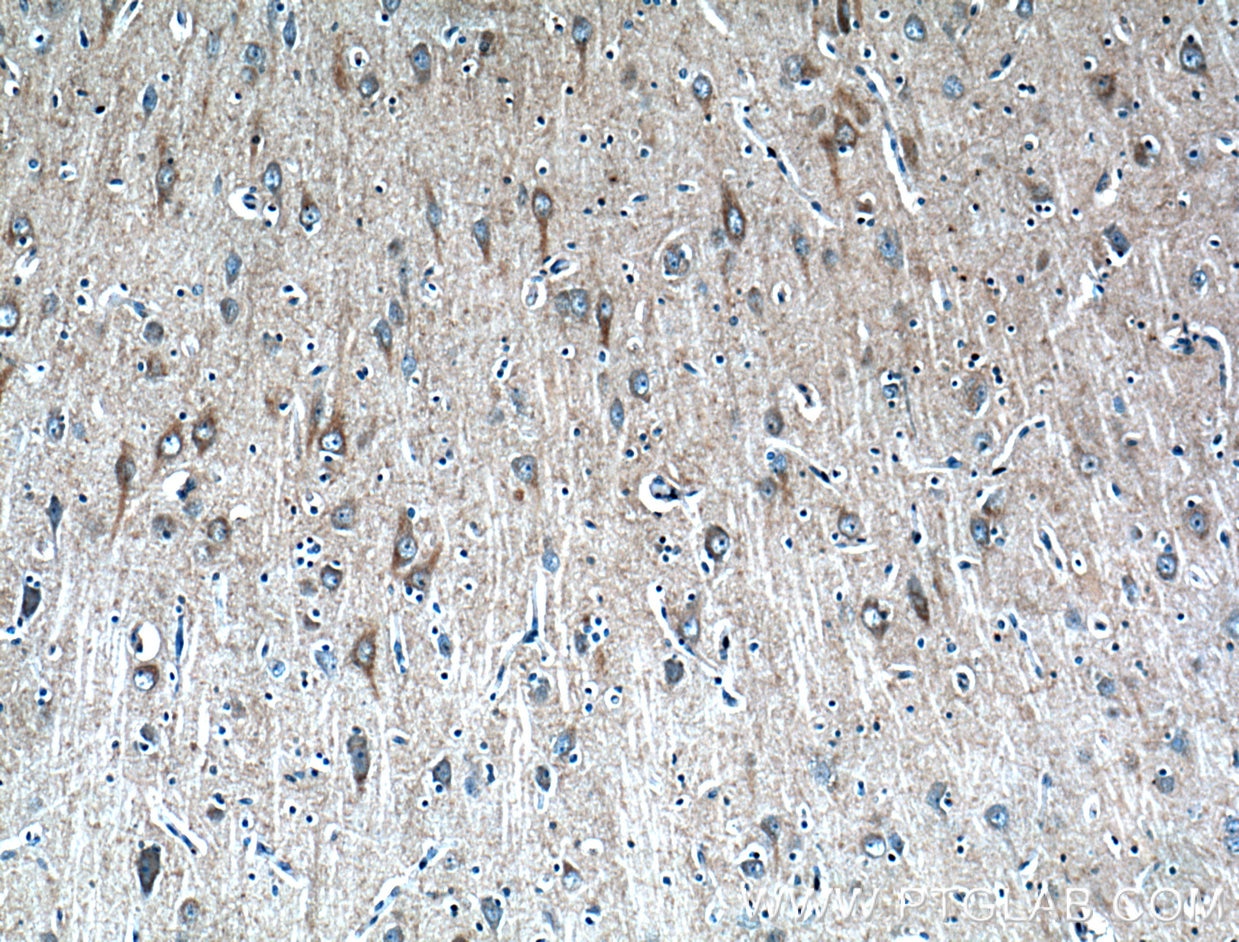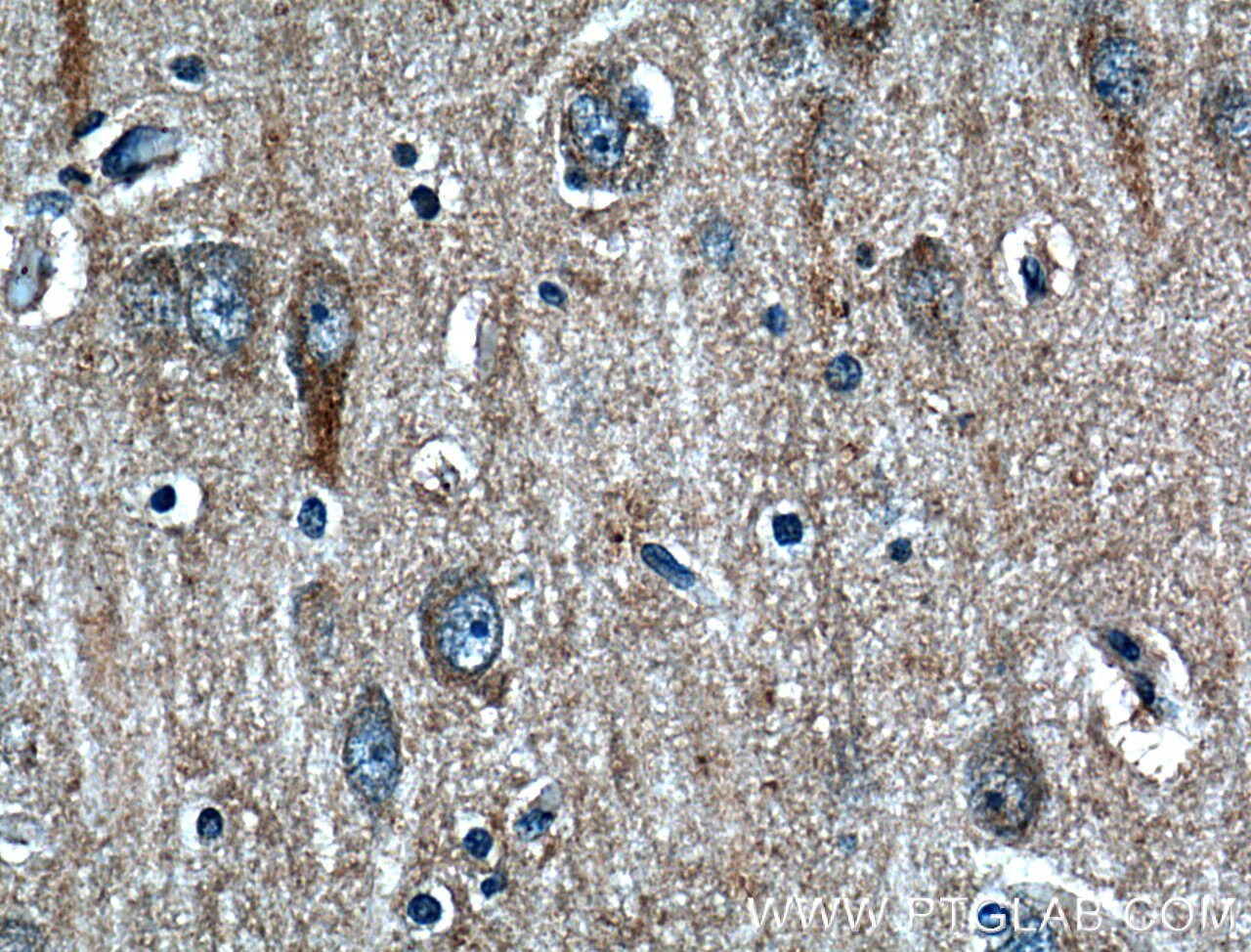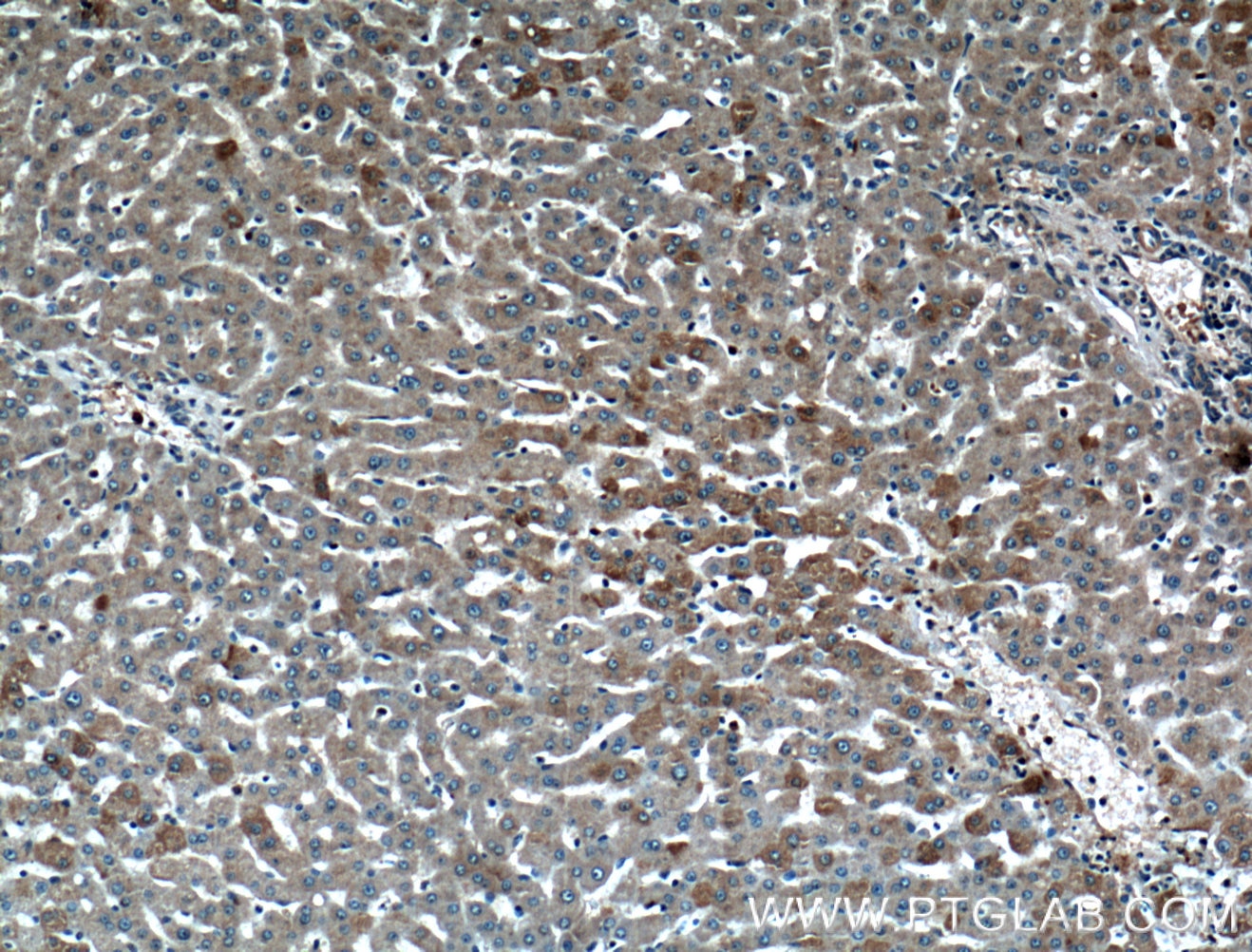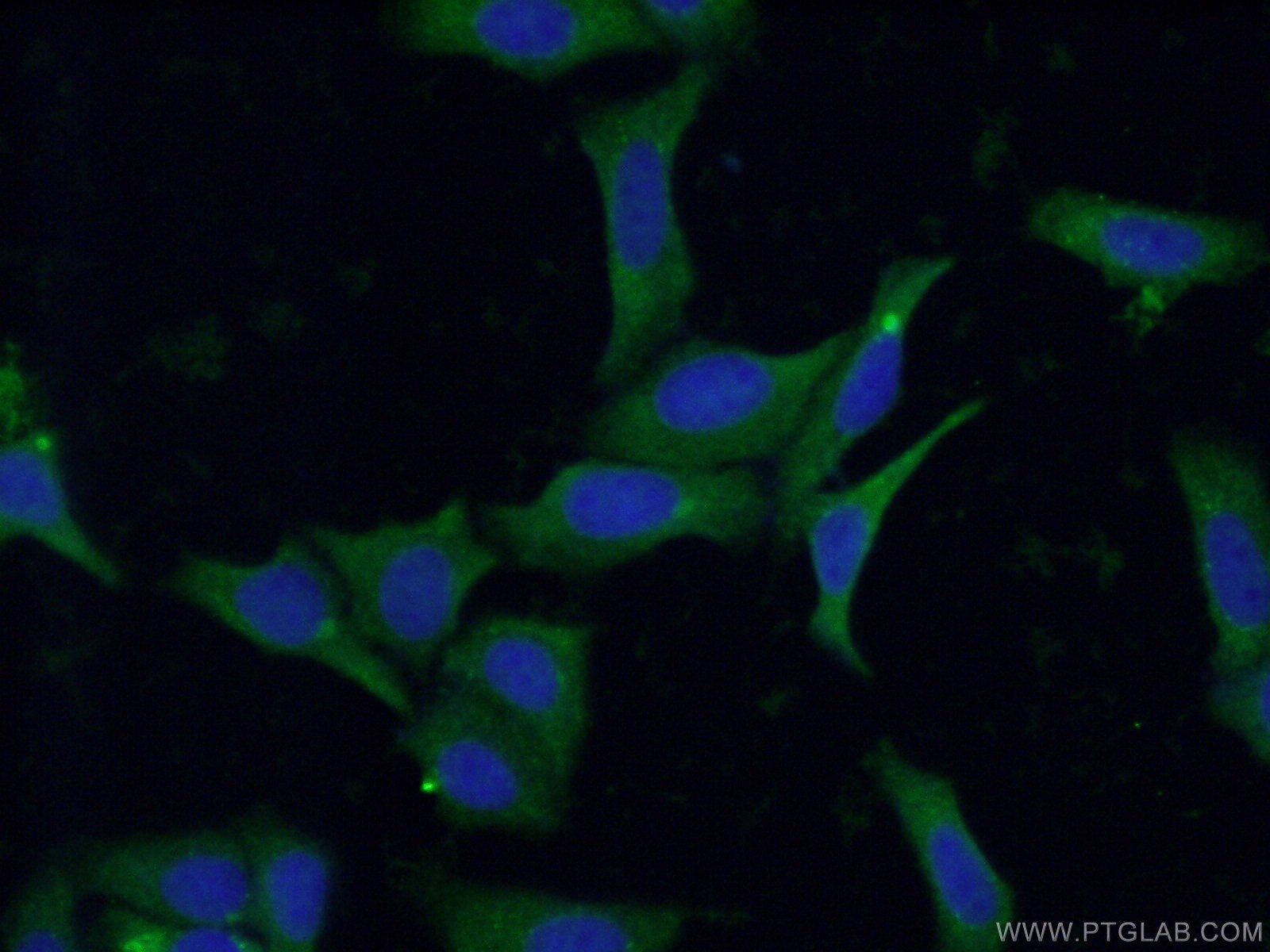- Featured Product
- KD/KO Validated
STT3B Polyklonaler Antikörper
STT3B Polyklonal Antikörper für IF, IHC, WB, ELISA
Wirt / Isotyp
Kaninchen / IgG
Getestete Reaktivität
human, Maus, Ratte
Anwendung
WB, IP, IHC, IF, CoIP, ELISA
Konjugation
Unkonjugiert
Kat-Nr. : 15323-1-AP
Synonyme
Galerie der Validierungsdaten
Geprüfte Anwendungen
| Erfolgreiche Detektion in WB | Rattenhirngewebe, humanes Hirngewebe, Mauslebergewebe, Rattenlebergewebe |
| Erfolgreiche Detektion in IHC | humanes Lebergewebe, humanes Hirngewebe Hinweis: Antigendemaskierung mit TE-Puffer pH 9,0 empfohlen. (*) Wahlweise kann die Antigendemaskierung auch mit Citratpuffer pH 6,0 erfolgen. |
| Erfolgreiche Detektion in IF | HepG2-Zellen |
Empfohlene Verdünnung
| Anwendung | Verdünnung |
|---|---|
| Western Blot (WB) | WB : 1:500-1:3000 |
| Immunhistochemie (IHC) | IHC : 1:50-1:500 |
| Immunfluoreszenz (IF) | IF : 1:50-1:500 |
| It is recommended that this reagent should be titrated in each testing system to obtain optimal results. | |
| Sample-dependent, check data in validation data gallery | |
Veröffentlichte Anwendungen
| KD/KO | See 2 publications below |
| WB | See 14 publications below |
| IP | See 1 publications below |
| CoIP | See 1 publications below |
Produktinformation
15323-1-AP bindet in WB, IP, IHC, IF, CoIP, ELISA STT3B und zeigt Reaktivität mit human, Maus, Ratten
| Getestete Reaktivität | human, Maus, Ratte |
| In Publikationen genannte Reaktivität | human, Maus |
| Wirt / Isotyp | Kaninchen / IgG |
| Klonalität | Polyklonal |
| Typ | Antikörper |
| Immunogen | STT3B fusion protein Ag2039 |
| Vollständiger Name | STT3, subunit of the oligosaccharyltransferase complex, homolog B (S. cerevisiae) |
| Berechnetes Molekulargewicht | 97 kDa |
| Beobachtetes Molekulargewicht | 94 kDa |
| GenBank-Zugangsnummer | BC015880 |
| Gene symbol | STT3B |
| Gene ID (NCBI) | 201595 |
| Konjugation | Unkonjugiert |
| Form | Liquid |
| Reinigungsmethode | Antigen-Affinitätsreinigung |
| Lagerungspuffer | PBS mit 0.02% Natriumazid und 50% Glycerin pH 7.3. |
| Lagerungsbedingungen | Bei -20°C lagern. Nach dem Versand ein Jahr lang stabil Aliquotieren ist bei -20oC Lagerung nicht notwendig. 20ul Größen enthalten 0,1% BSA. |
Hintergrundinformationen
STT3B is a component of the N-oligosaccharyl transferase (OST) enzyme which catalyzes the transfer of a high mannose oligosaccharide from a lipid-linked oligosaccharide donor to an asparagine residue within an Asn-X-Ser/Thr consensus motif in nascent polypeptide chains. N-glycosylation occurs cotranslationally and the complex associates with the Sec61 complex at the channel-forming translocon complex that mediates protein translocation across the endoplasmic reticulum (ER). SST3B seems to be involved in complex substrate specificity
Protokolle
| Produktspezifische Protokolle | |
|---|---|
| WB protocol for STT3B antibody 15323-1-AP | Protokoll herunterladen |
| IHC protocol for STT3B antibody 15323-1-AP | Protokoll herunterladen |
| IF protocol for STT3B antibody 15323-1-AP | Protokoll herunterladen |
| Standard-Protokolle | |
|---|---|
| Klicken Sie hier, um unsere Standardprotokolle anzuzeigen |
Publikationen
| Species | Application | Title |
|---|---|---|
Nat Chem Biol Oligosaccharyltransferase inhibition induces senescence in RTK-driven tumor cells. | ||
J Cachexia Sarcopenia Muscle Comparative proteomic analyses of Duchenne muscular dystrophy and Becker muscular dystrophy muscles: changes contributing to preserve muscle function in Becker muscular dystrophy patients. | ||
Mol Cell Proteomics Thyroglobulin Interactome Profiling Defines Altered Proteostasis Topology Associated With Thyroid Dyshormonogenesis | ||
MBio Dengue Virus Hijacks a Noncanonical Oxidoreductase Function of a Cellular Oligosaccharyltransferase Complex. | ||
EBioMedicine Targeting conserved N-glycosylation blocks SARS-CoV-2 variant infection in vitro. | ||
Cell Chem Biol Editing N-Glycan Site Occupancy with Small-Molecule Oligosaccharyltransferase Inhibitors.
|
